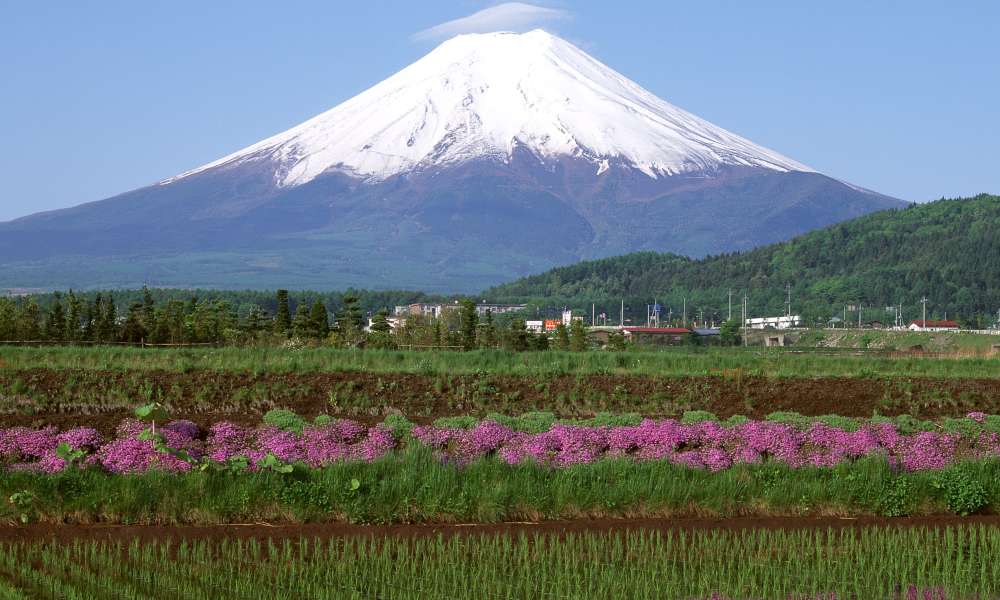
Read Adrian Bridge's account of climbing the majestic Mt Fuji.
The perfectly formed peak of Mount Fuji is notoriously shy, so any sighting counts as a blessing. I got mine about three quarters of the way up the ash-strewn path that leads to its summit.
I had just trekked for two hours through thick forest and was leaving behind the mist that had accompanied me thus far. And then, on turning a corner, there, undeniably, it was: Mount Fuji (“Fuji-san”).
It may have been shorn of its customary snow-capped splendour, but it was still a majestic sight. I savoured the moment to the full…
The combination of Fuji’s power and perfection of form has always been worshipped by poets and artists. The mountain, a Shinto shrine, has also long been a site of pilgrimage, attracting the spiritually inclined (and physically able). While early pilgrims took their time to reach its 3,776-metre-high summit. stopping to pay devotions at each of the 10 stations along the way, today’s climbers start much higher up at one of four points at the old fifth station which can be reached by road. Most climb by night hoping to catch goraiko - sunrise over the Pacific Ocean.
Armed with supplies of water, oxygen and a special stick to be stamped along the way, I chose the Subashiri trail, one of the shortest.
The early part of the walk through lush forest vegetation was easily the most scenic and there was camaraderie among climbers (mostly Japanese in their twenties and thirties). “See you at the top,” we joked.
The pleasure was heightened by that unexpected sighting of Fuji-san above (and of the spectacular lake-filled valley below). It was a magical moment.
The latter part of the walk (in my case commenced after a brief stop for food and rest in a mountain hut), involved steeper, rougher terrain and, in thinner air, was much more challenging. Towards the end, it was also extremely busy, as is often the case at weekends in the climbing months of July and August (a problem now acknowledged by local authorities who are considering introducing a charge to climb).
It was extraordinary to look up at a snaking sea of people, all wearing headlamps illuminating the mountain, and even though at times progress was slow, there was a determined stoicism among all of us.
In the end we were denied goraiko as the gods that control Fuji had decided to cover her in cloud that morning.
But it had still been an enlightening experience, a fulfilling physical challenge and, at points, away from the inevitable crowds and commercialism, there had been moments of real beauty.
Climbing Fuji may not be the Zen-like experience enjoyed by the early pilgrims, but it is still something that looms large on the Japanese psyche.
As I discovered two days later, in the Pacific Ocean resort of Shimoda, when my taxi driver noticed the stamped stick. "Fuji-san!" he declared, clasping the stick to his breast. My efforts had been rewarded with something not readily granted to gaijin (foreigners) in Japan: respect.


























































